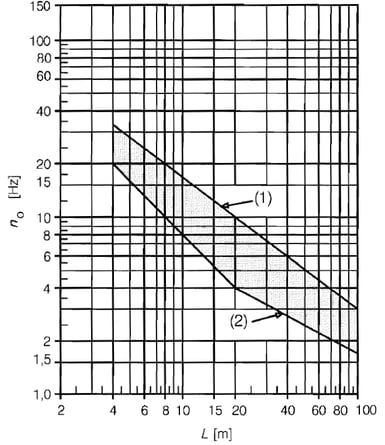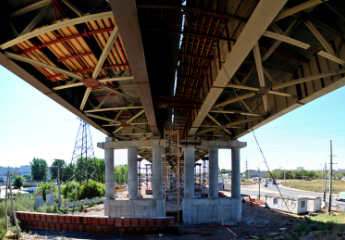Please fill out the Download Section (Click here) below the Comment Section to download the Full Webinar PDF File.
To watch the full webinar video, click here.
Table of Contents
*Click the content to move to the section
1. Introduction
2. When to go for Dynamic analysis?
3. Case Study
4. Conclusion
High-speed rail is becoming increasingly popular worldwide. Many countries are investing in high-speed rail as a way to reduce travel times, improve transportation efficiency, and reduce dependence on automobiles and air travel. The growth of high-speed rail has been driven by factors such as increasing urbanization, population growth, and the need to reduce carbon emissions from transportation.
The increasing popularity of high-speed rail is also being driven by advances in technology and engineering, which are making high-speed rail systems faster, more reliable, and more affordable. As a result, high-speed rail is being adopted by an increasing number of countries, with many countries planning new lines and expanding existing networks to meet growing demand.
The High Speed 2 (HS2) is a proposed high-speed rail project in the United Kingdom. The project aims to connect London to Birmingham, Manchester, and Leeds, and to provide faster, more reliable, and more sustainable transportation between these major cities. The first phase of the project, which will connect London to Birmingham, is currently under construction and is expected to be operational in 2026. The second phase, which will extend the line to Manchester and Leeds, is in the planning stages.
The HS2 project is expected to reduce travel times between London and the cities in the North of England, improve connections between regional cities, and provide additional capacity to support economic growth. The project is also expected to generate significant environmental benefits, including reducing carbon emissions from transportation, reducing road congestion, and improving air quality. Overall, the HS2 project is seen as a key component of the UK's transportation infrastructure and a major step forward in the country's efforts to create a more efficient, sustainable, and connected transport network.
/1.jpg?width=734&name=1.jpg)
Arcadis, a global engineering and design consultancy firm, was involved in the design and delivery of the HS2 in a Joint Venture (JV) with Setec & COWI. The railway consists of an 80km railway line, 86 bridges, 14 viaducts (3.6km total), and 3 green tunnels (5km total). In the following article, Senior Bridge Engineer Pere Alfaras elaborates on the significance of dynamic analysis for railway bridges and how this was performed for HS2.
Introduction
Since high-speed railway bridges are subjected to cyclic loading by the continuous wheel loads traveling at high speed and regular spacing, their dynamic behavior is of extreme importance and has a significant influence on the riding safety of the trains. High-speed trains impose significant dynamic actions on bridges and viaducts. For speeds above 200 km/h, the effect of resonance must be considered, since in many cases can be the governing factor when deciding the structural form. The classic approach to the design of the bridge is to use static analysis to find forces, and flexure under certain moving loads, and consider dynamic amplification factors to account for the dynamic effects of the train. In HS1 this approach was used to take into account the dynamic effects. However certain issues were observed in the First French HSL project: Paris-Lyon:
-
Resonance phenomenon
-
Ballast degradation
-
Rapid track deterioration
-
Short Span Structures especially affected
In a joint effort in Europe, a committee ‘ERRI D214’ was constituted to study these problems. The following conclusions were drawn by the committee for train speeds over 200 km/h:
-
Likelihood of resonance effects
-
Dynamic amplification factor unable to predict resonance
-
Deck acceleration must be assessed
The committee established a series of rules and guidelines for the dynamic assessment of bridges. These guidelines have been implemented in Eurocode. What we see in the Eurocode is basically the conclusions of the committee on this particular issue.
Resonance and dynamic magnification:
The problem of resonance manifests in different ways depending on the type of structure. If ballasted tracks are used and deck acceleration is greater than 0.7g (g: acceleration due to gravity), in that case, the ballast grains lose their grain interlock. Due to this, there is a loss in horizontal and vertical strength resulting in issues with track alignment, quick deterioration of track, and risk of derailment of the train. In the case of a ballastless track when deck acceleration is greater than g, the contact between the wheel and rail is lost which also leads to quick deterioration of the track as well as the risk of deterioration. Usually, it is assumed that single-span simply supported structures have less or no dynamic effect on high-speed trains. However, these single-span structures are especially susceptible to resonance. Resonance effects are significantly reduced on continuous structures.

When to go for Dynamic analysis?
Eurocode provides a flow chart for simple and complex structures to determine whether dynamic analysis is needed or not. Below shown is a flow chart given in the code.
/Flow%20chart%20determining%20whether%20a%20dynamic%20analysis%20is%20required%20or%20not..jpg?width=598&name=Flow%20chart%20determining%20whether%20a%20dynamic%20analysis%20is%20required%20or%20not..jpg)

Simple structures are those which behave like beams between supports. Structures with behavior such as grillage, orthotropic, cable-stayed, or more complex behavior are classified as complex structures.
Acceleration check:
Maximum peak values are given in EN 1990-2002 A2.4.4.2.1. To ensure traffic safety the recommended values are:
γbt = 3.5 m/s2 for the ballasted track (ballast stability)
γdf = 5.0 m/s2 for the ballast-less track (wheel-rail contact)
The above-mentioned values are w.r.t stability of ballast, track maintenance as well as avoiding derailment. Passenger comfort criteria are not covered in this clause. Passenger comfort criteria are covered in EN 1990-2002 A2.4.4.3.1.
Fundamental frequency:
Frequencies to be considered should be up to the greater of [BS EN 1990-2002 A2.4.4.2.1]:
-
30 Hz
-
5 times the frequency of the fundamental mode of vibration of the member is considered
-
Frequency of the third mode of vibration of the member
Bending and torsional need to be identified to assess n0 and nT. Mass participation factors can be used to identify the relevant modes.
Mass and stiffness considerations:
Any overestimation of bridge stiffness will overestimate the natural frequency of the structure and speed at which resonance occurs. A lower bound estimate of the stiffness throughout the structure shall be used. Regarding the cracked stiffness, assessment of cracked stiffness is essential, since a reduced cracked stiffness leads to lower fundamental frequencies hence lower resonant speed. For the estimation of mass, a lower bound estimation predicts maximum deck accelerations. An upper bound estimate of mass is used to predict the lowest speed at which resonant effects are likely to occur.
Time History analysis:
Time history analysis needs to be performed to mimic the dynamic effect of trainloads. Linear time history can be considered as generally the structural behavior is within the linear range. Modal integration (modal superposition method) is generally used with the first model of the structure in accordance with BS EN 1990-2002 A2.4.4.2.1.
Time step:
The Eurocode does not give any recommendation on the time step. However, ERRI D214 provides guidelines on time steps which are shown below. Timestep value should not be greater than:
h1 = 1/8fmax h2 = Lmin/200ν h3 = Lmin/4nν h4 = 0.001s
where:
fmax: maximum frequency used on the modal analysis
Lmin: minimum span
N: number of modes used on modal analysis
ν: speed of train
If a very high value of time step is considered it will affect the amplitude of the dynamic analysis:
/Amplitude%20vs%20time%20for%20various%20time%20steps.jpg?width=527&name=Amplitude%20vs%20time%20for%20various%20time%20steps.jpg)
Structural damping can be considered as per the Eurocode recommendations [BS EN 1991-2:2003 6.4.6.3].
Case Study
A 30 m span simply supported psc box girder bridge is considered with nodes at every 0.5 m. The structural arrangement of the bridge is shown below:
/General%20arrangement%20of%20the%20bridge.jpg?width=600&name=General%20arrangement%20of%20the%20bridge.jpg)
/Software%20model%20considered%20for%20dynamic%20analysis.jpg?width=600&name=Software%20model%20considered%20for%20dynamic%20analysis.jpg)
From the above flow chart, it was concluded that dynamic analysis is required for this bridge. The results from the dynamic analysis are discussed below.
Result Interpretation
Peak values must be plotted against speeds to identify resonance/critical speed
/Peak%20acceleration%20at%20different%20train%20speed%20for%20different%20train%20model.jpg?width=734&name=Peak%20acceleration%20at%20different%20train%20speed%20for%20different%20train%20model.jpg)
It can be seen that the bridge is safe from the risk of derailment as the maximum peak acceleration is less than 3.5m/s2 which is specified by the euro code for the ballasted track.
The dynamic response of the deck members must be checked and compared to the equivalent static responses.
/Dynamic%20response%20vs%20the%20static%20response%20of%20deck%20at%20multiple%20train%20speed.jpg?width=600&name=Dynamic%20response%20vs%20the%20static%20response%20of%20deck%20at%20multiple%20train%20speed.jpg)
Conclusion
The conclusions for the dynamic analysis are tabulated below:

Watch the full webinar video
 Get Started midas Civil
Get Started midas Civil
 Featured blog of this week
Featured blog of this week






2.jpg)

/345%20240/Dynamic%20Analysis%20of%20Footbridges%20as%20per%20Eurocode.png)

